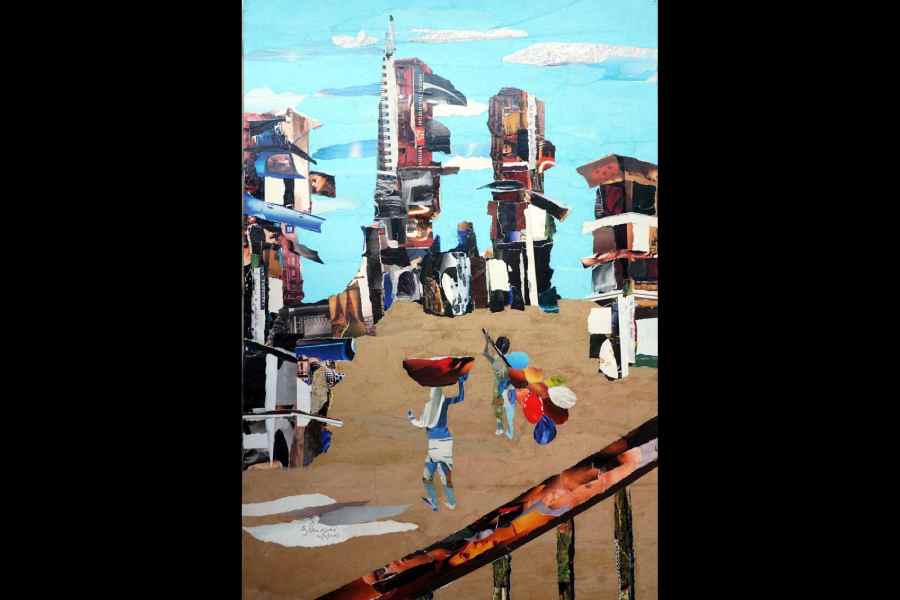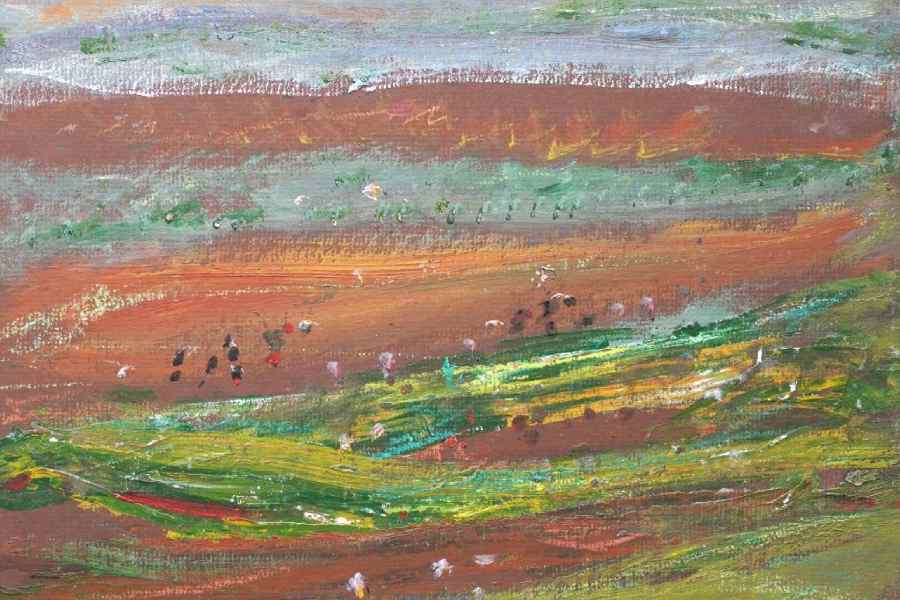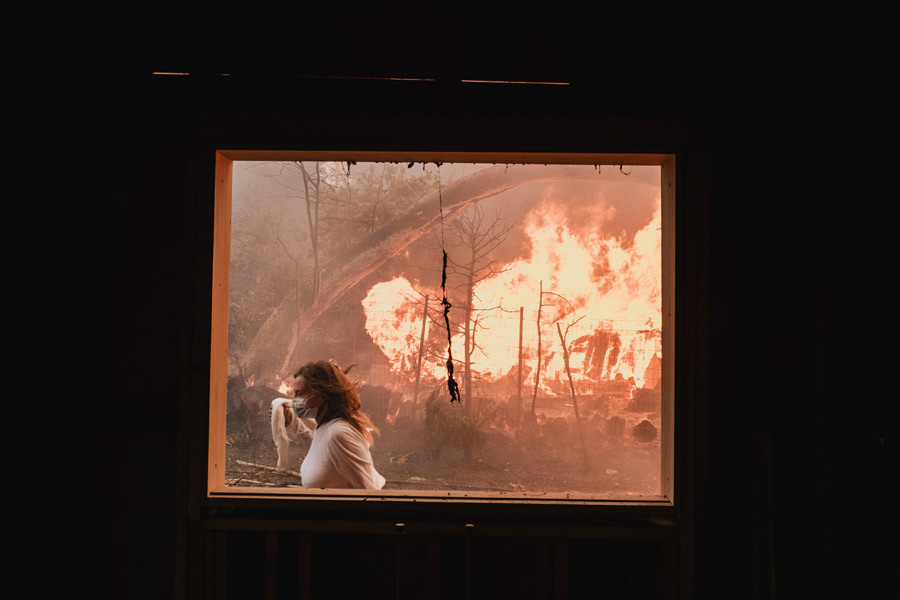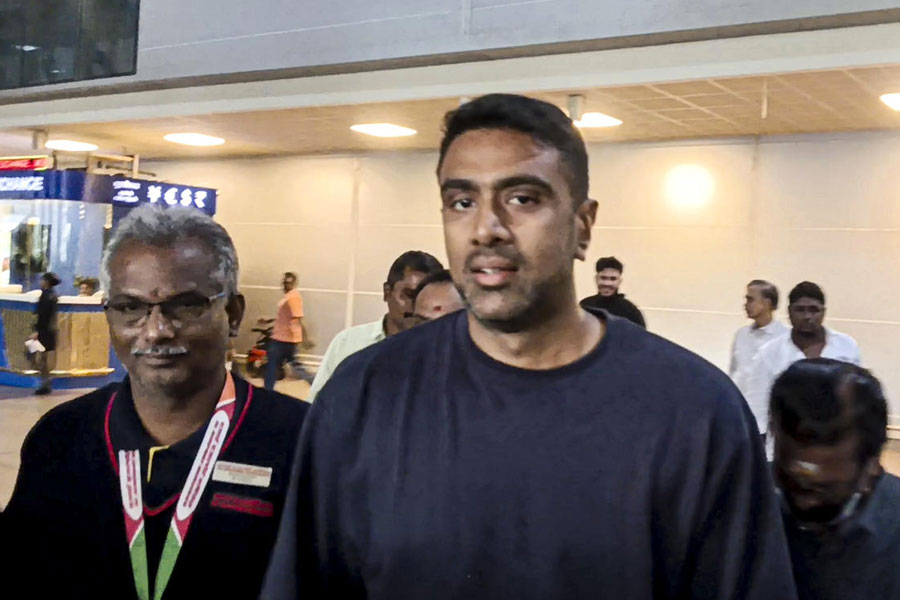Debovasha’s exhibition, Collage and Others by B.R. Panesar, gave viewers an opportunity to take a look at this self-taught artist’s works after a long break. Baldev Raj Panesar (1927-2014), the artist-statistician, who had made Calcutta his home for about 50 years, was better known as the much-respected Panesarji. Born in Hoshiarpur in Punjab, he came to Calcutta to study statistics at the Indian Statistical Institute and then retired as the joint director of the same institution. Among various other eminent personalities whom he became friends with, he was close to P.C. Mahalanobis, who had founded the ISI, and to the Rabindrasangeet singer, Subinoy Roy, who also worked there.
At first, he painted in his free time but after his retirement he was engaged with paint and brush full-time. He had participated in many exhibitions here and abroad but he never travelled. He donated the better part of his income to charity and would feed countless children in the neighbourhood where he had lived for years.

Source: Debovasha
Initially, he had made a name for himself as a collage artist but he gave up that medium as he began to groom the collage artist, Shakila, who was the little daughter of a vegetable seller in Taltala where Panesar lived at the YMCA. In his last days, Panesar worked tirelessly in his tiny room. He mainly painted landscapes that were not so much related to geography as his mental state. He became a member of the Society of Contemporary Artists in 1974. He spent the last years of his life in an old age home where he continued to make art.
Panesar had evolved a distinctive style of his own in collage and graphics. With a paintbrush and acrylic paint, he turned out many views of undulating countrysides. His brushstrokes became swift, broad and bold and, although sameness would creep in at times, there was no doubt about his spontaneity.

Source: Debovasha
At this exhibition, Panesar’s collages were seen after a long time and, perhaps for the first time, his graphic prints were on display too. In one urbanscape, the tall buildings lined up against the horizon look uncannily like the jagged Antilla, the residence of Mukesh Ambani. There were other dystopic views of modern cities with condos rising above slums. One would never have guessed the mild-mannered artist had it in him. He had also done some interesting non-figurative collages where he used paper of varied texture and colours. Some of the collages were touched with paint.
Panesar’s indigo etchings, with their giant egg, feather and shadowy presences, had an air of mystery. He seemed to have freed himself from the shackles of convention. The green and ochre landscapes were often dotted with tiny squiggles, which, if one looked carefully, were either human beings or beasts (picture, top right). Actually these could also be heaving seascapes, with waves and sprays of surf rising towards the sky. The strokes of pen and ink imparted a certain strangeness to Panesar’s later works. His mixed-media hillscape in indigo and brown captured the desolation of the craggy and forested terrain. In one charming mixed-media work, a group of boisterous children jump around with their dog. He rendered human beings with a few swift strokes of his brush. Since Panesar was under no pressure to sell, he could take liberties that other artists could never dare.










